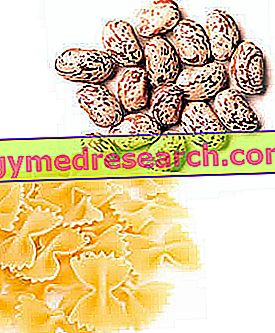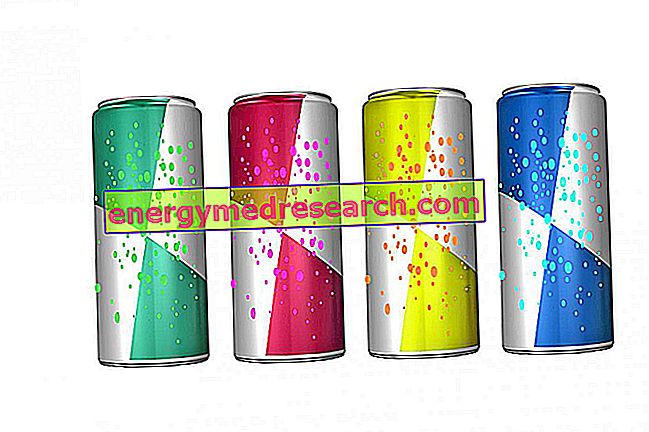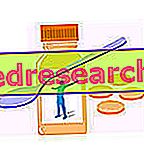Generality
Pasta and beans is one of the most traditional Italian dishes par excellence. This dish, in addition to being extremely widespread in almost all regions of the Bel Paese (of which each preserves one or more specific recipes), is similar to many international recipes, which combine the combination of cereals, legumes and vegetables.

Among all these variations, it is likely that the basic ingredients of pasta and beans unambiguously include: semolina pasta, beans, vegetables, aromatic herbs, seasoning fat and, sometimes, ingredients of animal origin.
The regions in which pasta and beans seem the most rooted are Lazio, Tuscany, Veneto, Lombardy and Campania.
Variations and Variables of Pasta and Beans
The preparation techniques for pasta and beans are also different. Some originate a white dish, in which no acidity is perceived and sweetness prevails; others, instead, prefer the strong and sour taste of the tomato. There are also liquid (brodose) and other decidedly dense preparations (a characteristic obtained by simmering the beans for a long time and cooking the pasta inside). The choice of pasta is also very important; short or long, dry or fresh (with water and flour, or with eggs), wheat or spelled, etc. Among the vegetables (in addition to the tomato), above all the onion, celery and carrots stand out; someone also adds a few pieces of potato, while others enrich with chicory. As for the aromas, they are commonly used: garlic, pepper, rosemary, sage, thyme, marjoram and parsley. The dressing fats, necessary for the initial sauté (sometimes also used for the final seasoning), mainly include lard and olive oil. Other ingredients of animal origin, on the other hand, are pancetta, guanciale, salami, bones, sausage, eggs, cheese rinds and, of course, grated cheese.
As for beans, the varieties used are different. Many believe that the "traditional" ones are the borlotti and the cannellini, belonging to the Phaseolus genus, Specie vulgaris . In reality, these two types have reached Italy only after the discovery of America, the continent from which they come; the real local beans instead belong to the Genus Vigna (eg from the eye ). Nevertheless, today, the varieties of Phaseolus vulgaris are preferred in the national territory , such as: Borlotti, Cannellini, Panzaredda, Tabacchino and Tuvagliedda.
Pasta and Beans - Video Recipe
X Problems with video playback? Reload from YouTube Go to Video Page Go to Video Recipes Section Watch the video on youtubeNutritional aspects
It is logical to deduce that, by virtue of the wide heterogeneity existing between the various recipes, pasta and beans can provide a nutritional contribution to say the least variable; however, some features are common and shareable. Below we will examine a pasta and beans WITHOUT ingredients of animal origin, with dried pasta, borlotti beans, a small percentage of celery, carrots, onion, garlic, tomato and enriched with extra virgin olive oil.
Pasta and beans is a 100% edible dish. It brings, on average, a high percentage of water, a very positive aspect in the diet of the sportsman and the elderly (two categories constantly predisposed to the risk of dehydration, especially in the summer).
Then, pasta and beans are an important source of vegetable-type protein; vegans are well aware of this (they take proteins only from foods of non-animal origin). Thanks to the compensation of the mutual deficiencies, the amino acid pool of this dish is almost comparable to that of meat and fish (even if the quantities are lower). This means that the essential molecules belonging to this group are all contained in the right quantities, which determines a High Biological Value (the right ratio of beans: pasta would be 1: 3). It is also true that legumes, therefore also beans, boast a considerable concentration of anti-nutritional agents; these are essentially trypsin inhibitors and phytic acid, which intervene by reducing protein digestion (trypsin inhibitors) and preventing the correct absorption of certain mineral salts (phytic acid and phytates). It must also be said that, by properly soaking legumes and / or eliminating the soaking water of the first cooking phase, almost all of the phytic acid and phytates are properly eliminated. Similarly, by heat treatment, trypsin inhibitors denature lose all anti-nutritional function.
WARNING! Pasta and beans, containing wheat, and therefore gluten, are NOT suitable for celiacs (GLUTEN-FREE diet).
Pasta and beans provide a considerable amount of complex carbohydrates, or starch, but also of dietary fiber. While the former have a purely energetic purpose, the latter acts above all from: promoter of the sense of satiety, absorption modulator (reduces the glycemic index), prebiotic and "scavenger" of the intestine (protecting it from carcinogenic toxins). Attention, however, the excess of fibers can also perform a discrete inhibitory (anti-nutritional) function on the absorption of ALL nutrients.
As far as lipids are concerned, pasta and beans contain a quantity that is directly proportional to the weight of olive oil. By itself, beans and pasta do not bring large percentages of triglycerides and the only noteworthy lipophilic component is composed of legume lecithin and phytosterols. However, lecithin, of which the cholesterol-lowering effect is well known, can also have a mild effect as a trypsin inhibitor. Overall, with regard to fatty acids, it is possible to define that the lipid profile of pasta and beans is "beneficial" for the metabolism of man, as it is rich in monounsaturated and polyunsaturated chains.
With regards to mineral salts, pasta and beans uses an excellent magnesium, potassium and iron content; the contribution of other microelements is not bad either. This characteristic also makes pasta and beans particularly suitable for sportsmen. The portion of sodium is naturally low, even if the final content depends above all on discretionary (ie added) cooking salt.
Last but not least, the vitamin profile. Pasta and beans is a food rich in group B molecules even if, due to the prolonged cooking method, not all of them reach the finished dish intact.
Pasta and beans in a "simple" version is a food suitable for any nutritional regime. The obese (in suitable portions), the subjects suffering from hyperlipemias (hypercholesterolemia and hypertriglyceridemia), the hypertensive subjects (provided that discretionary salt is not used) and the diabetics (in suitable portions) are particularly beneficial. It should not be missing from the sportsman's diet, although for elite athletes it is often necessary to limit the fiber intake with food; this is attributable to the fact that, having to comply with a very high energy demand, due to the equally abundant portions, often this nutritional element becomes excessive.
As anticipated, thanks to the high biological value protein content (but also in iron), this is an extremely useful recipe in the vegan diet.
The average portion of pasta and beans (cooked and served) can range from 300 to 500g.



